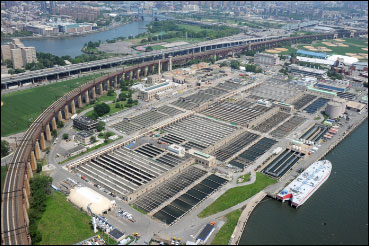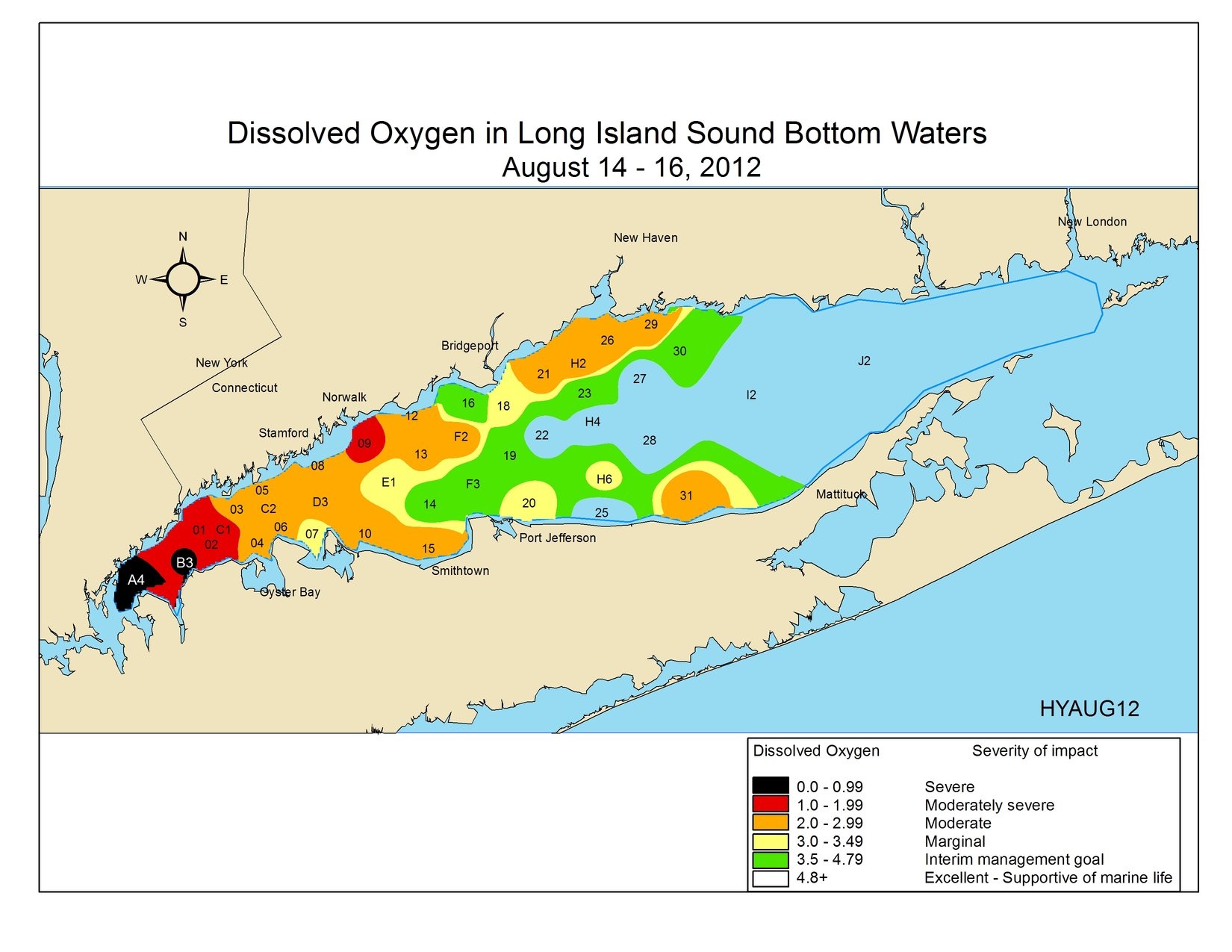The biggest sewage treatment plant impacting Long Island Sound recently completed an upgrade that is expected to lead to a significant improvement in the western Sound’s water quality.
The upgrade means that the Wards Island Wastewater Treatment Plant, which serves the western section of the Bronx and the upper east side of Manhattan, is removing half the nitrogen that is part of its waste stream. Nitrogen, a component of sewage, acts as a fertilizer in the Sound, triggers the growth of algae and causes the annual summertime drop in dissolved oxygen concentrations known as hypoxia.

Photo: NYC Department of Environmental Protection
The New York City Department of Environmental Protection issued a news release this week announcing the completion of the Wards Island upgrade, which cost $237 million. Located near Hell Gate, at the farthest western edge of the Sound, the Wards Island plant serves more than a million people in the Bronx and Manhattan and treats about 275 million gallons of sewage a day (for comparison, Westchester County’s two biggest Sound shore plants, New Rochelle and Mamaroneck, treat about 33 million gallons a day combined).
With the upgrade, the Wards Island nitrogen contribution to the Sound falls by almost half, to 17,000 pounds per day, from 33,000 pounds.
The city also recently finished a $280 million nitrogen removal project at its Hunt’s Point plant, also in the Bronx. It is currently working on similar projects at its Tallman Island and Bowery Bay plants, both in Queens.
To try to eliminate, or at least minimize, hypoxia, communities along the Sound in New York and Connecticut are required to remove 58.5 percent of the nitrogen flowing through their treatment plants, by 2014 and 2017. As of 2011, they were 79 percent of the way toward that goal, according to EPA’s Long Island Sound office.
Hypoxia is a problem because it temporarily destroys habitat in the western Sound in summer – sometimes for a few days, sometimes for weeks. As dissolved oxygen concentrations fall, the Sound becomes uninhabitable for fish, crustaceans and other marine life. Last summer, almost one quarter of the Sound suffered from hypoxia, and much of the water off Westchester and Nassau counties had almost zero dissolved oxygen.

Because hypoxia is a warm water phenomenon, weather is also a factor. Last year, hypoxia was partly attributable to last winter’s unusually warm temperatures, which prevented the Sound from cooling off as much as usual.
It’s hard to say how much the upgrade at Wards Island will improve water quality in Long Island Sound. Depending on currents and tidal action, some water in that part of the Sound heads toward the East River and Harlem River, and some moves further into the western Sound. Regardless, the completion of this project is a step in the right direction towards reducing nitrogen and eventually healing the low-oxygen dead zone.
Posted by Tom Andersen, NY program and communications coordinator for Save the Sound. Tom is also the author of This Fine Piece of Water: An Environmental History of Long Island Sound.
